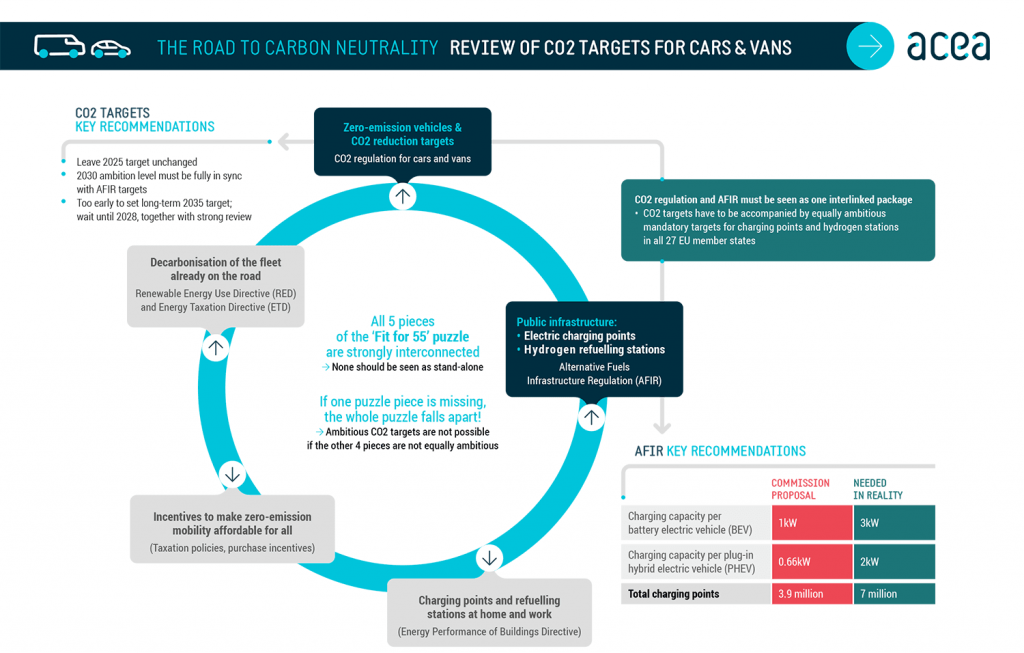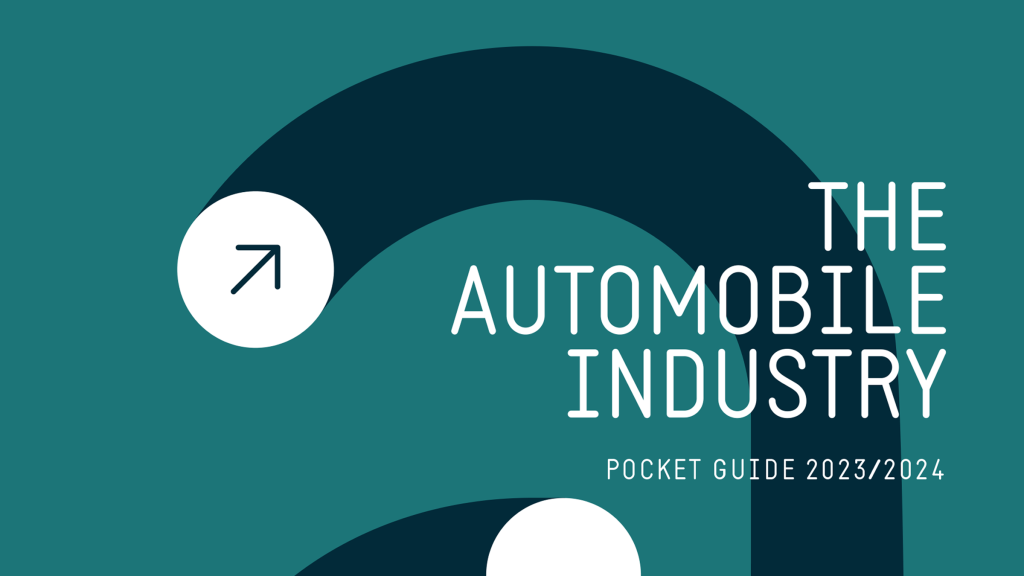Fact sheet – Review of CO2 targets for cars and vans
All puzzle pieces of the ‘Fit for 55’ EU climate package are strongly interconnected. This means that the EU Regulation setting CO2 reduction targets for passenger cars and vans must be seen together with the Alternative Fuels Infrastructure Directive (AFIR) as one interlinked package.

Indeed, as this fact sheet explains, ambitious car and van CO2 targets are not possible if the other pieces of the ‘Fit for 55’ puzzle are not equally ambitious.
The road to carbon neutrality: key recommendations
- 2025
- ACEA welcomes the proposal to leave 2025 targets unchanged.
- Any change to this would not leave enough time to adapt due to vehicle development and production cycles.
- ACEA welcomes the proposal to leave 2025 targets unchanged.
- 2028
- ACEA calls for a much stronger mid-term review, with a clear safeguard that sufficient infrastructure will be in place (linking to AFIR and EPBD).
- 2028 would be the best time to set a long-term target.
- ACEA calls for a much stronger mid-term review, with a clear safeguard that sufficient infrastructure will be in place (linking to AFIR and EPBD).
- 2030
- A -55% CO2 target for cars (compared to 2021 baseline) is very challenging.
- It would only be achievable with a massive ramp up of infrastructure to reach a total of some 7 million chargers (3kW / BEV and 2kW / PHEV).
- Aiming only for 3.9 million chargers (1kW / BEV and 0.66kW / PHEV), the current AFIR proposal falls far short of this ambition level.
- Its stringency must be increased!
- The -50% target for vans is also extremely demanding, bordering on being unrealistic, especially in conjunction with other measures like the changed slope of the limit curve.
- An ambitious 2030 target will speed up the structural transformation of the automotive value chain.
- It will require careful management of the workforce and a ‘Just Transition’ plan to for reskilling.
- The existing derogation for small volume manufacturers in Regulation 2019/631 should be maintained as these vehicles only make up 0.2% of total fleet.
- A -55% CO2 target for cars (compared to 2021 baseline) is very challenging.
- 2035
- A 2035 target should be set as part of the 2028 review. It is too early today to fix a 100% CO2 reduction target – which essentially is a ban on the internal combustion engine – at a time when there are still too many open questions:
- How will infrastructure roll-out and consumer uptake develop in the next few years?
- What kind of game-changing technologies will hit the market between now and 2035?
- A 2035 target should be set as part of the 2028 review. It is too early today to fix a 100% CO2 reduction target – which essentially is a ban on the internal combustion engine – at a time when there are still too many open questions:
- 2050
- Motor vehicle manufacturers are fully committed to bringing CO2 emissions down to zero, supporting Europe’s target of reaching climate neutrality by 2050.
Motor vehicle manufacturers are fully committed to bringing CO2 emissions down to zero, supporting Europe’s target of reaching climate neutrality by 2050.
Downloads
Content type
Fact
Vehicle types
All vehiclesPassenger carsCommercial vehiclesVans



